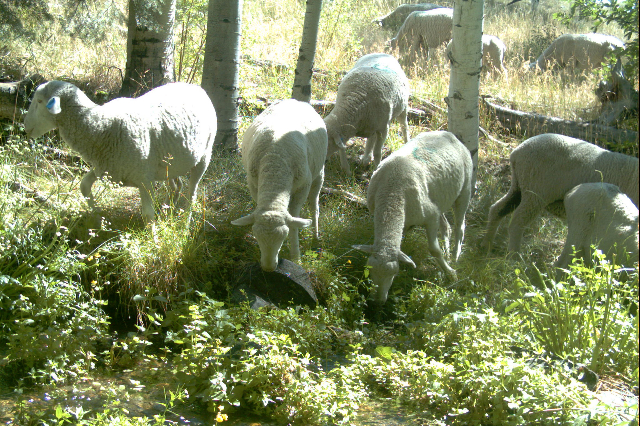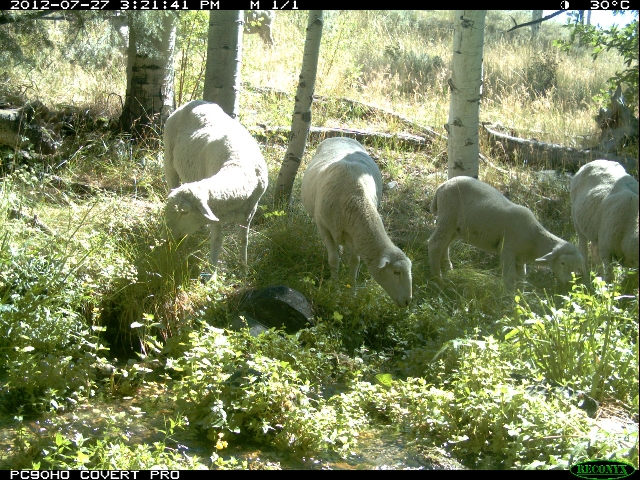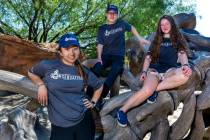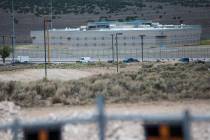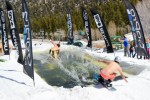Water authority in sheep trouble with Park Service
For years, sheep from a ranch in White Pine County have been grazing illegally inside Great Basin National Park, but don't expect some Bundy-style government roundup.
This is no rogue rancher flouting federal authority. These animals belong to the Southern Nevada Water Authority.
"It's been going on for a while now, and we're still having trouble with trespass sheep," park superintendent Steve Mietz said.
Since 2009, the National Park Service has been telling the Las Vegas Valley's wholesale water supplier to keep its livestock out of the roughly 77,000-acre park in the Snake Mountains 300 miles northeast of Las Vegas. Letters have been exchanged and meetings held between the two agencies to discuss ways to fix the problem, but the sheep keep showing up where they're not supposed to.
For five years now — and as recently as last month — the park has used remote cameras to catch the animals in the act. Among pictures of elk, deer, skunks and squirrels, the motion-sensing cameras have captured sheep by the dozen, with the occasional shepherd or sheep dog.
The stubborn problem has created some bad blood between the park and the authority.
Records obtained by the Review-Journal under the Freedom of Information Act include several terse letters between the two agencies, culminating in 2013 with a Park Service citation for illegal grazing and other infractions. A $375 fine was never paid as the agencies continued talks.
Different breed of rancher
The water authority entered the ranching business almost a decade ago, when it spent $79 million to buy up seven livestock operations in Spring Valley, just west of the national park, as part of a plan to siphon groundwater from across rural eastern Nevada.
Spring Valley rests at the northern end of the controversial project and is expected to provide most of the water that could one day fill a multibillion-dollar pipeline.
The authority's acquisitions there included 23,000 acres of private land, several thousand cows and sheep and 900,000 acres of federal grazing rights. The ranches also came with more than 21 billion gallons of surface and groundwater rights. Under state law, the authority must put those rights to beneficial use — namely by growing hay and raising livestock — or it could lose them.
"Our goal is to maintain the assets as they came to us" so they can be used down the road to support and mitigate the pipeline project, said Zane Marshall, the authority's director of resources and facilities. "This is all about natural resource management."
As part of that mission, Nevada's largest municipal water agency owns just under 9,000 sheep. As many as 700 of those animals spend the summer grazing across 64,000 acres of Bureau of Land Management property along the western and southern boundaries of Great Basin National Park.
Marshall described it as steep, "extremely rugged country," where shepherds patrol on horseback. Save for a few scattered signs, the edge of the park is impossible to distinguish.
"We're not running sheep into the park" on purpose, Marshall said. "We don't want them to cross the boundary. We only want to use the federal land we are permitted to use."
Preserving a healthy herd
Trespassing livestock pose problems for the Park Service beyond any unauthorized forage they might eat. Park officials also worry domestic sheep will carry in invasive weeds and trample creeks used by a sensitive species of trout. But the biggest concern is for the health of Great Basin's isolated and comparatively new herd of wild bighorn sheep.
The last naturally occurring bighorn is thought to have disappeared from the Snake Mountains sometime in the early 1970s, at a time when wild sheep populations were bottoming out across Nevada.
State wildlife officials set out to reverse that trend in 1979 by importing 20 Rocky Mountain bighorn sheep from Colorado and releasing them back into the range over a two-year period.
The experiment succeeded just long enough to support two small, state-licensed hunts in 1985 and 1986, the same year the park was established. Then the bighorn population crashed again.
Mike Cox, big-game staff biologist for the Nevada Department of Wildlife, said the herd dwindled to five animals during the 1990s before rebounding again around 2005.
Today the bighorn at Great Basin probably number between 35 and 40. So far, those animals appear to be disease-free, but biologists fear that won't last long with domestic sheep grazing nearby.
Cox said the greatest chance for interaction between the herds comes in late spring, when the bighorn are waiting downslope for the snow to recede and the domestic sheep are moving upslope into their summer range.
The water authority and its hired hands seem to be working hard to keeping track of their animals, he said, but no amount of diligence could be enough to prevent contact and the spread of disease.
"We still have a ticking time bomb out there," Cox said. "Transmission is bad, we don't know when it's going to happen, and there is no vaccine for it. So the best thing we have at our disposal is separation."
No fences for these neighbors
The Park Service has rejected one seemingly obvious solution: 5 miles of fence to mark the line between the grazing allotments and the park boundary.
Mietz said any barrier capable of keeping the two herds apart would prevent a host of other wildlife from moving freely through the area, resulting in untold "collateral damage."
As an alternative, Marshall said the authority proposed construction of a few, short "drift fences" aimed at keeping livestock out of the creeks they use to funnel into the park. But Cox said even smaller fences could harm wildlife, and he doubts they would work on the sheep.
Then there is another problem: Bighorn don't pay much attention to the boundary either. Mietz said tracking collar data shows the herd only spends about a third of its time inside the park. The rest of the time the animals can be found on the surrounding BLM land.
Young rams are especially prone to wandering. "They can wander off just like an 18-year-old boy who walks out to the interstate and puts his thumb out," Cox said. "Unfortunately sometimes these rams come back with dirty laundry."
The two agencies are working on a new grazing plan that is likely to include more of what the authority has already tried: marking sheep with bells and GPS tracking collars, adding more shepherds and dogs, delaying the herd's move to its summer range and conditioning the animals to graze uphill in the morning and back down in the afternoon, so if they do wander off at night, they will have farther to go to reach the park boundary.
Meanwhile, the Park Service is looking into ways to draw the bighorn to the eastern slope of the Snake Range — away from the domestic sheep — by expanding and improving habitat there, possibly through the use of controlled burns.
"Our whole goal is to separate the herds ... in both time and space," Mietz said. "We're trying to work collaboratively at this point, instead of taking a more adversarial stance."
Marshall said much the same thing: "Our relationship with the Park Service is good, and we're working to address the problem. We're not ignoring the issue. We think we've improved things."
But he also warned against unreasonable expectations. As any rancher will tell you, animals are unpredictable.
"They're domestic sheep, but they're not pets," Marshall said. "When you have 500 to 700 of them, it's not uncommon for five or six or a dozen of them to take a walk."
Contact Henry Brean at hbrean@reviewjournal.com or 702-383-0350. Find him on Twitter: @RefriedBrean



